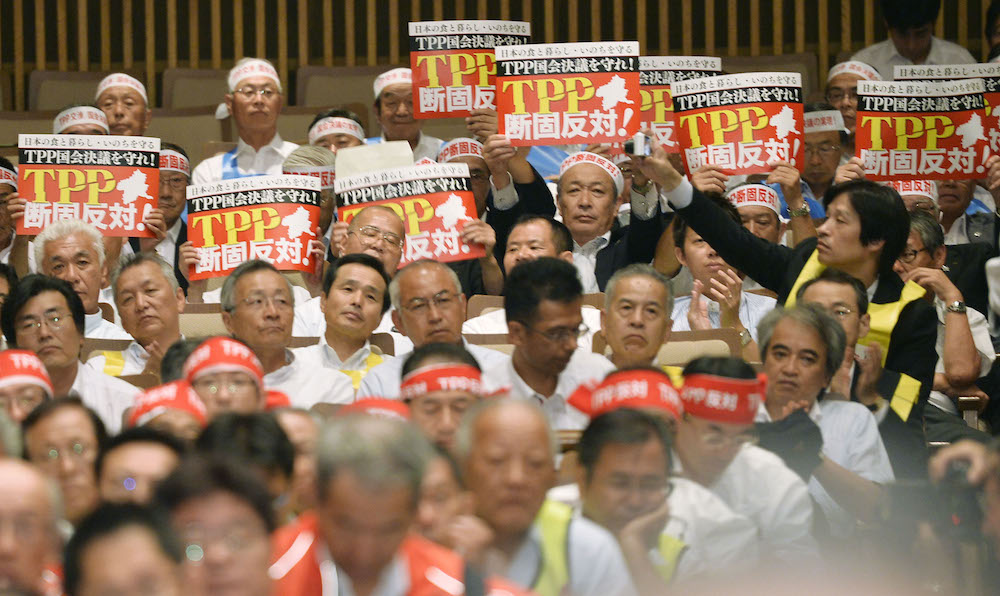TPP, WTO and Japan’s rice
NOUMINREN | 31 May 2016
TPP, WTO and Japan’s rice
by Shushi Okazaki, Deputy Director of the International Section, Japan Family Farmers Movement (NOUMINREN)
Introduction
Asia, making up only a quarter of the total land area of the earth, feeds 60% of the total population of the world. This has been made possible by the fertility of rice paddies, cultivated by peasants and family farmers.
The Japanese archipelago stretches from the subarctic to the subtropics, where Japanese farmers have grown rice, a tropical crop, adapted to the country as “Japonica.” Cultivation of rice is described as follows: “planted in snowmelt water, rice grows in the rainy season and grows more in very hot summer like the tropical area, getting ripe under a clear autumn sky.”
For us rice is not only staple food but also it is deeply connected to our society, culture, ecosystem and geographical features. Protecting rice is the same as protecting our country and sovereignty.
Rice self-sufficiency rate has gone beyond 100% since the mid-1960s. Although the Japanese government started a rice acreage reduction policy in 1971, the self-sufficiency rate remained almost 100% from then on.
At the time of the GATT Uruguay Round Agreement, Japan set aside 800,000 ha of rice paddies (30% of the total rice paddies) as the place unused or for other crops. Nevertheless, Japan accepted the import of Minimum Access (MA) rice. The amount of the MA rice has now reached 770,000 tons while the area of rice paddies set aside for the production adjustment has gone beyond 1 million ha (40% of the total rice paddies).
Mass imports of rice under the heavy rice acreage reduction policy---This extraordinary situation will get worse by the additional import quotas set by the TPP. We will make all-out efforts to thwart the ratification of the TPP, stop the imposition of the MA rice, establish trade rules based on Food Sovereignty and protect our rice production.






